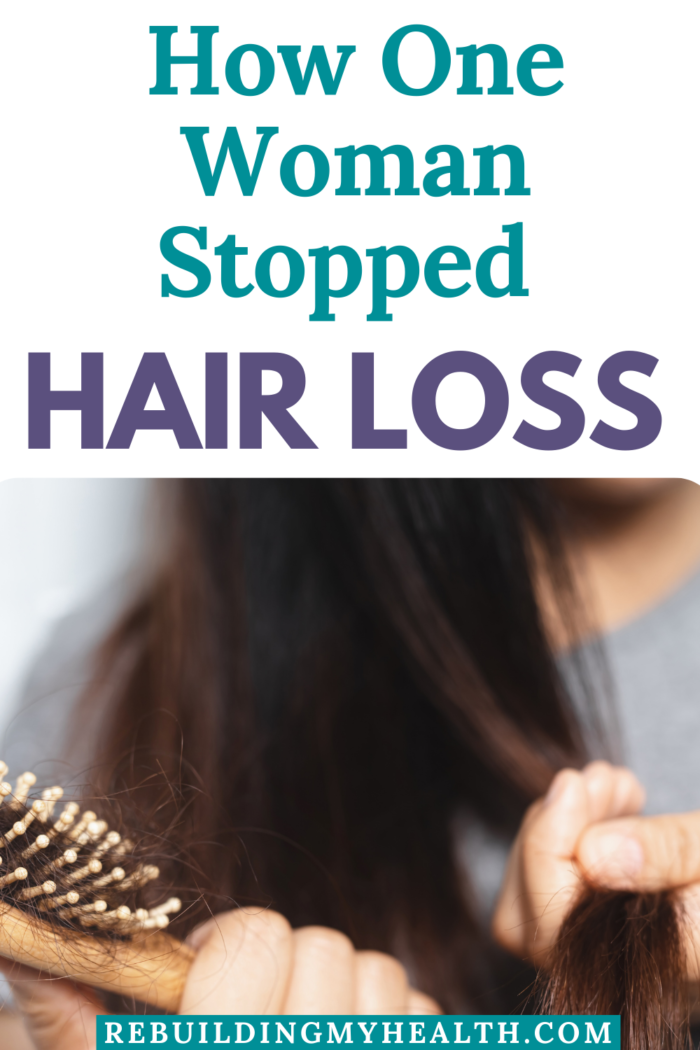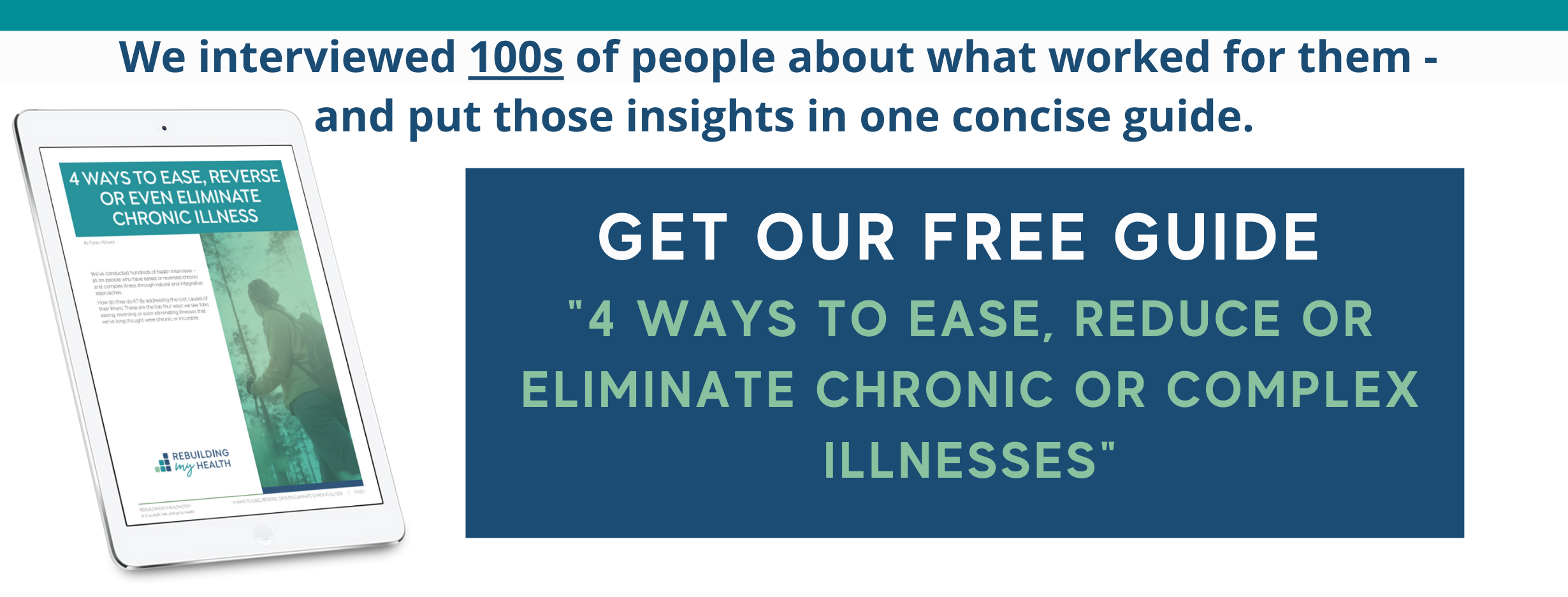The Missing Link Behind One Woman’s Decades-Long Alopecia
“Reversing alopecia is an inside job. There’s no quick fix. It’s hardly ever one or two things. You have to be willing to dig.”
– Jill Grunewald
At the age of 13, in the midst of middle school, Jill Grunewald noticed a half-dollar-size bald spot on the top of her head.
“I had just gotten a really super short pixie haircut, so there was no covering it up,” she says. “It was out there for everybody to see.”
She began worrying that a single spot would grow into complete baldness – something her older sister had already experienced. Unfortunately, doctors offered nothing to assuage her concerns.
“They said this is like lightning striking twice in the same place,” Jill recalls. “I looked at this dermatologist, laughed and said, ‘You have got to be kidding me!’”
‘No’ to Painful Steroid Shots
The typical treatment for hair loss, officially called alopecia, is cortisone shots in the scalp – a procedure as painful as it sounds. Shots had not worked for Jill’s sister, and had provoked unwanted side effects such as irregular menstrual cycles and erratic emotions.
Jill reluctantly tried the shots but found them too painful to endure. And she also experienced the same emotional spikes as her sister.
“I was in puberty and my intuition at the time told me it is a really bad idea to be taking hormones in puberty,” she says. “And I told my mom, ‘I will never do this again. I’ll go bald. I don’t care. I’m never doing this again.’”
Hair Loss Connected to Hashimoto’s Disease?
For three decades, Jill’s hair loss came and went. Sometimes she wouldn’t even notice a spot until it had already started growing back. Her naturally thick and curly hair helped hide the spots, for a while.
In her late 30s, Jill had been diagnosed with Hashimoto’s disease, an autoimmune thyroid condition. She hadn’t really had Hashimoto’s symptoms, but could Hashimoto’s be the cause behind her alopecia?
Jill was already a certified functional nutrition and hormone coach when she received the Hashimoto’s diagnosis. Instead of taking thyroid medication, she decided to try other approaches first.
Her research led her to steps to bolster her immune system. She began a diet to deliver specific micro-nutrients and eliminated inflammation-triggering foods such as gluten and sugar. Beyond eating foods to support her thyroid and immune system, she worked on improving her digestion to ensure she absorbed them.
Over time, she refined her diet and supplements – and successfully brought her thyroid markers into normal ranges. In fact, she sent her Hashimoto’s into remission.
MCAS: The Missing Link for Jill’s Alopecia
Despite putting her Hashimoto’s into remission, Jill’s alopecia persisted.
By her early 40s, half of her scalp was bare and she was no longer getting regrowth. Called the ophiasis pattern, there was little to no hair above her ears, wrapping around the back of her head. Now, it was tough to hide.
In the search for a cause, Jill asked her functional medicine doctor to run every test available. When the labs came back, nothing in the numbers indicated why her hair loss had worsened.
She did, however, seem to have a weakened immune system. After 20 years of zero colds or flu, she had ended up being sick for three consecutive winters.
Stress may have been to blame. In a short period of time, three close family members had passed away, and she was enduring the new rigors of parenting after recently adopting a daughter.
Jill sought help from Dr. Greg Plotkinoff of Minnesota Personalized Medicine. In the three-hour initial appointment, he listened to her closely and ran through a list of questions. In every question related to mast-cell activation syndrome (MCAS), her answers were affirmative. Plotkinoff immediately suspected that she had mast-cell activation syndrome or at least high histamine levels.
“He said, ‘I think this is the missing link,’” Jill recalls.
With mast-cell activation syndrome, mast cells, which form part of the body’s defense system, are inappropriately triggered. This can lead to hives, swelling, shortness of breath, digestive issues and more. The triggers vary from one person to another.
‘My Hair Grew Back’
Following that appointment, Jill began a low-histamine diet and took mast-cell stabilizers and antihistamines. High-histamine foods include alcohol, fermented foods, dairy, dried fruit, avocados, some vegetables, nuts, chocolate, processed or smoked meats, and leftovers.
She also stimulated her scalp by needling her bare spots and rubbing in essential oils such as rosemary and peppermint. “Some essential oils have been shown to work better than minoxidil, or Rogaine,” she says.
Meanwhile, she supported her immune system with increased vitamins C and D, plus a multi-mineral vitamin. She first took liposomal glutathione and then switched to S-acetyl L-glutathione as a more effective form. She also made sure she managed her stress and got plenty of sleep.
Within weeks of starting the protocol, Jill noticed dramatic changes.
“All my hair grew back,” she says.
After a rough and deflating few years, Jill finally had a full head of hair.
Possible Causes of Alopecia
These days, Jill rarely contends with hair loss. However, she remains vigilant about keeping her body healthy.
She’s ever-mindful of her histamine intake, though she’s not as strict as before. She pays attention to high-histamine foods like avocados, wine and leftovers.
As a nutrition and hormone coach, she works with other women struggling with alopecia, as well as with other conditions such as Hashimoto’s and hormone imbalances.
Jill stresses that reversing hair loss is not one-size-fits-all.
“It is usually so multifactorial for people,” she says. “It’s a little bit of this, a little bit of that, and it causes kind of this perfect storm.”
Among the many potential causes she mentions are a family history of autoimmunity, especially celiac disease, type 1 diabetes, and rheumatoid arthritis; nutritional deficiencies; hormonal imbalances, systemic inflammation; intestinal permeability/digestive imbalances; heavy metals toxicity; and Candida overgrowth.
While most of the time, alopecia has an autoimmune component, Jill says, sometimes it does not. Yet, those with hair loss often have one or more autoimmune conditions, or multiple autoimmune syndrome (MAS).
“Sometimes when people have an overactive, hypervigilant immune system, the hair follicles get targeted because the body is diverting resources to other life-dependent systems,” she says. “You know, we don’t need hair and fingernails to live. So sometimes people end up with alopecia (and nail problems, which is common in the alopecia community) as a result of autoimmunity that may or may not have been diagnosed.”
Jill also mentions that another form of hair loss, androgenic alopecia, may have accompanying autoimmunity, or may be related to genetics or hormones. Androgenic hair loss is all-over thinning of the hair versus patching. In men, it’s known as male pattern baldness.
“Androgenic alopecia is actually more common in the female community than the patchy pattern, but it is woefully, woefully, underdiagnosed and misdiagnosed,” she says. “Women are blown off. It’s just awful. And this pattern can take more time to reverse.”
After nearly four decades of hair loss, Jill encourages others to look for their root causes, which can vary widely from person to person.
“Reversing alopecia is an inside job. There’s no quick fix. It’s hardly ever one or two things. You have to be willing to dig.”
Learn more about Jill and check out her best-selling book, The Essential Thyroid Cookbook.
If you enjoyed this story, you might like: 58 – But Feeling 28 – Despite Multiple Autoimmune Disorders.
The information on this site is for educational and inspirational purposes only and is not intended to replace the advice of qualified professionals. Keep in mind that what works for one person may not work for another. Always consult your healthcare practitioners before beginning new approaches or treatments. Some links on Rebuilding My Health may be affiliate links. This means that we may receive a commission - with no additional cost to you - if you make any purchases using those affiliate links. Rebuilding My Health is a participant in the Amazon Services LLC Associates Program. Learn more.



